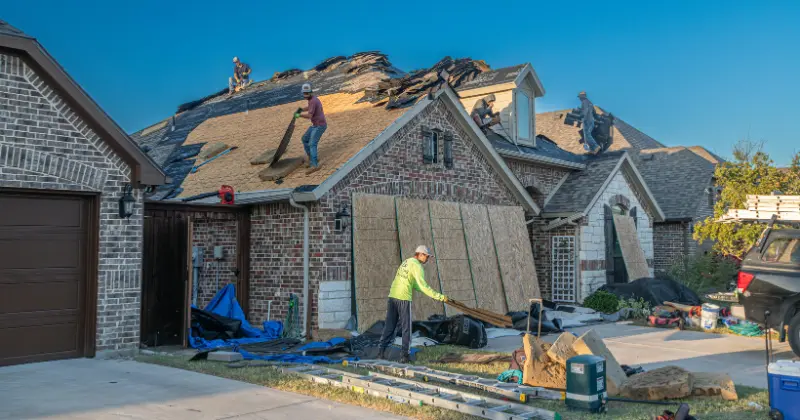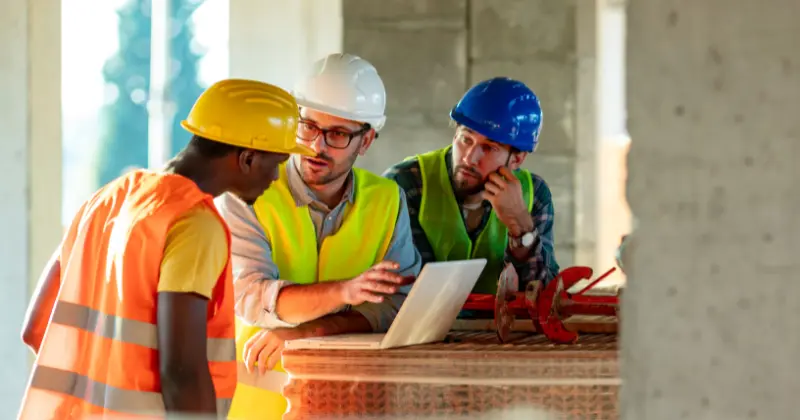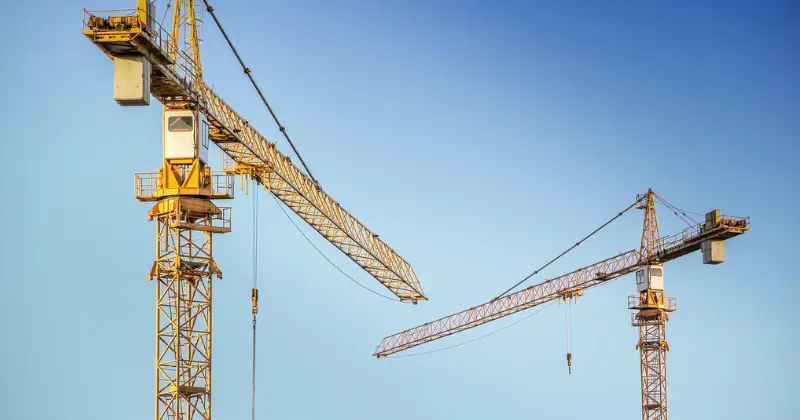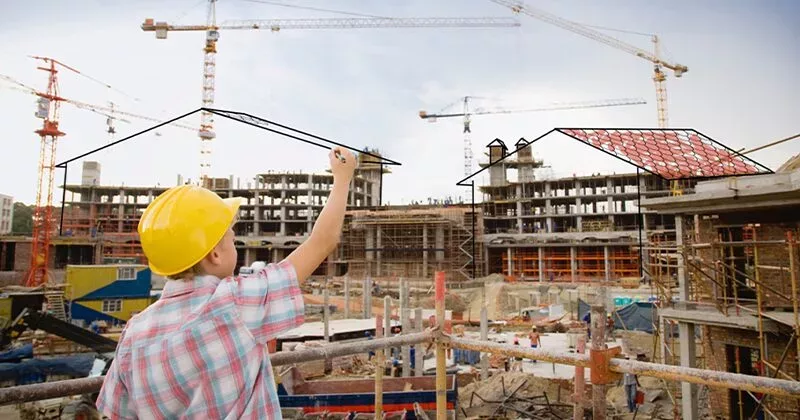11 mins read
Understanding Challenges and Best Practices of the Construction Phases
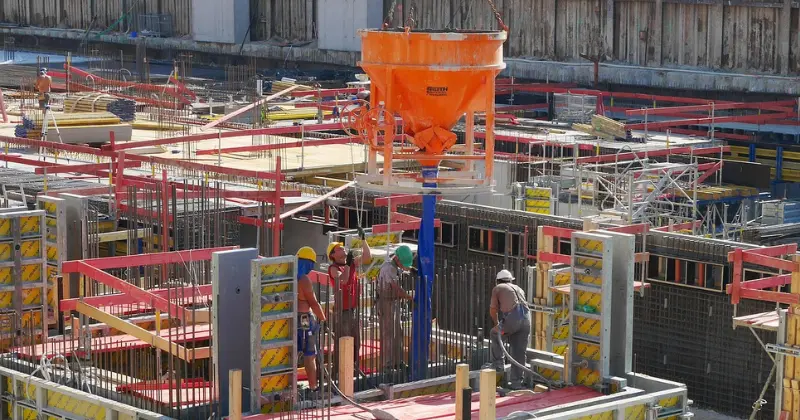
Construction projects come in all shapes and sizes. There are complex commercial projects that require large multidisciplinary teams, and there are small renovation projects that only require a small group of professionals to complete the scope. Regardless of their size and nature, all construction project types need thoughtful planning to define the necessary resources, budget, timeline, building permits, and other key aspects.
To ensure success, stakeholders (led by the project manager) follow an organized process divided into phases that guide the project’s development. Each construction phase involves various tasks that must be completed accurately to keep the project moving forward and to meet overall expectations.
Modern construction software solutions help companies optimize each phase of the project to ensure the highest building quality and return on investment. However, the software also needs to be paired with a thorough understanding of how each stage works, the common challenges, and the best practices to be followed for success. This RIB guide will tell you everything you need to know about the main construction project phases.
Top Construction Phases Explained
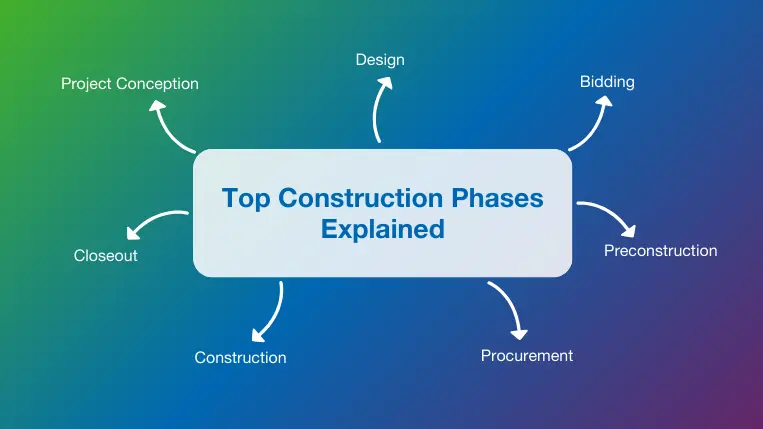
Dividing projects into phases can help organize everything to the smallest detail and ensure resources are allocated and spent efficiently. It also helps to ensure the project’s expected quality is achieved to keep the client happy. Let’s explore the main construction stages below.
1. Project Conception
This stage, also known as pre-design or planning, is the first step of the project, where the initial scope and requirements are developed. At this stage, the project owner or client comes up with the idea for the project and hires a team of experts to determine whether it is feasible to build or not. This includes looking for a place to build, defining the size of the building, identifying building codes and regulations to be followed, and much more.
This first phase is probably the most important one as it sets the foundation for all the coming ones. Making errors at this point can affect the entire project later. Therefore, efficient planning and communication between stakeholders is key.
Key Activities:
- Feasibility Study: As its name suggests, a feasibility study helps the owner determine whether the project is feasible, should be adapted, or should be discarded completely. Feasibility studies cover five main areas:
- Technical feasibility, which evaluates the project site, potential risks, environmental factors, and more.
- Economic feasibility, which evaluates the financial viability of the project, often with a cost-benefit analysis.
- Legal feasibility, which evaluates and ensures that the project is compliant with regulations.
- Operational feasibility, which evaluates that the entire project can serve its intended purpose once it is completed.
- Scheduling feasibility, which estimates the time needed to complete the project, considering how the design, materials, budget, and other factors, can affect the schedule.
- Project Initiation Document (PID): Once the feasibility study is completed and the project is approved, the management team develops a PID. This document outlines all the important information about the project, including its scope, potential risks, key milestones, quality criteria, and more. A PID is used to get financing for the project, to assess progress based on the initial goals and requirements, and to keep every stakeholder on the same page about critical information for the project.
Common Challenges:
- Preliminary information: Project conception is one of the most challenging construction project phases, since it can be difficult to complete accurate estimates, create a project plan, or develop a schedule while important details are still being discussed and finalized. Feasibility studies and preliminary estimates are based on whatever information is available at that time, so a viable project can easily be cancelled or postponed, or a building might proceed into the next phase without addressing all the warning signs. During the project conception phase, disagreements over scope and spending limits can slow down progress and team-building efforts.
- Risk assessments: Assessing the expected risks can also be challenging during the earliest stages of construction projects, since many factors related to the site, materials, design, and equipment are usually not known. These unknowns also make it difficult to create a realistic contingency budget to cover unforeseen expenses.
- Time pressure: The wide range of activities that must be completed in a short amount of time can also make things difficult for clients, contractors, project managers, and engineers. This includes the initial preparation of sketches and preliminary specifications, project charter creation, prospective site reviews, and many other necessary yet time-consuming tasks.
2. Design
Next in our breakdown of phases of construction is the design phase, where the architect and their team start to bring the building or structure to life based on the goals and objectives discussed with the owner. At this stage, preliminary cost estimates, timelines, and more thorough risk assessments are also completed to ensure the design meets these requirements.
Key Activities:
- Conceptual design: This happens in the early stages of a project; it involves rough sketches and diagrams to help stakeholders understand the owner’s vision.
- Schematic design: At this point, design and drawings become more detailed. The design team develops drawings to illustrate the project’s spatial layout and structure. It helps stakeholders visualize the building’s physical form.
- Design development: This design phase is much more detailed, where construction drawings, electrical layouts, plumbing plans, and HVAC are developed to provide technical information to guide construction and installation.
- Contract documents: This involves the generation of detailed documents, such as architectural, structural, electrical, and mechanical drawings. This documentation will guide the work of contractors and subcontractors.
Common Challenges:
- Site access: Issues that impede surveying and testing required as inputs for building design and structural analysis can delay the design phase.
- Vague objectives: An incomplete definition of sustainability goals and objectives that influence the building design or the selection of construction materials can also cause delays and inefficiencies.
- Interdependencies with other phases: The higher level of detail required for suitable design drawings, models, and construction specifications also applies to many other aspects of the project. This means any disagreements on scope changes must be resolved quickly to avoid impacting on the budget and schedule.
3. Bidding
During the design phase, the construction bidding process is also carried out. At this stage, the contractor submits pricing estimates and work plans for the client’s consideration. Although price is a major consideration for most clients, proposals offer an opportunity for contractors to demonstrate their expertise, strategic mindset, and dependability.
Key Activities:
- Selecting the delivery method: The first activity in the bidding process is selecting the delivery method. This will define how the work will be completed and safeguard the interests of both parties. To learn more about this topic, check out our guide on construction contract types.
- Sending invitations: Once the delivery method is selected, the owner selects qualified contractors or construction managers and sends them invitations to participate in the bidding process. Sometimes, the owner trusts a specific contractor and personally invites them to the project.
- Awarding the contract: The owner decides which contractor to hire based on price, experience, and other factors, and agrees on the conditions of the contract. The responsibilities and payment methods will vary based on the type of contract chosen.
Common Challenges:
- Variable costs: Variation between estimates and actual costs as the design and scope are finalized.
- Budget constraints: Balancing budget constraints with design aspirations, especially when the project utilizes new design elements or construction processes, and there is a lack of historical projects for comparison.
- Contractor selection: Thoroughly vetting contractors can also be time-consuming, especially when project teams are under pressure to complete the bidding cycle quickly.
- Collaboration: Coordination with multiple engineers and other construction roles to ensure everyone has access to the same files and information can become a risk without modern technology.
- Bid management: The construction bidding process can also be challenging when contractors misinterpret requirements or multiple questions and clarifications are needed to produce accurate bids. Construction software tools for bid management help to simplify the process and improve communication between stakeholders.
4. Preconstruction
Once the design and bidding are done, the preconstruction stage begins. This stage involves all tasks that need to be completed before construction begins, and it starts with the consolidation of a project team which often includes the contract administrator, the project manager, the superintendent, the field engineer, and the health and safety manager. At this point, communication channels are also defined to prevent misunderstandings and enhance collaboration.
Key Activities:
- Preconstruction meetings: During preconstruction meetings, all project stakeholders ensure that each process and task, along with their roles and responsibilities, is clear. These meetings ensure that everyone is on the same page to kick things off. Clear communication channels are also defined for this purpose.
- Risk management: The GC must generate a construction risk management plan that outlines potential risks and strategies to eliminate or mitigate them. Doing so avoids surprises during construction that can lead to budget and schedule issues.
- Scheduling: The team generates a work breakdown structure that lists all the tasks to be completed to create a project roadmap. The WBS is turned into the final schedule with milestones for progress tracking.
- Site conditions: At this stage, the contractor carries out site surveys to inspect the site conditions. It is common to find unexpected conditions during the inspection not included in the contract documents.
- Bill of Quantities (BoQ): Another key activity that happens in the preconstruction stage is the generation of the BoQ. This invaluable document lists the quality and quantity of work to be carried out by the general contract, which helps with accurate scheduling and cost control.
- Cost estimation: After the site evaluation, the project team is in a position to generate a realistic construction cost estimation. The estimation includes costs related to labor, schedule, materials, equipment, and regulatory expenses.
- Safety plans: Construction site accidents are not uncommon. Therefore, the team must implement safety strategies to ensure workers are informed and trained to tackle potential risks and prevent accidents.
- Final agreement: After cost estimation and scheduling is complete, the parties enter a legal agreement that allows the contractor to build the project on behalf of the owner based on the specifications and requirements previously agreed upon.
Common Challenges:
- Collaboration: Much like the previous construction phases, the preconstruction stage requires many complex activities to be completed in a relatively short time. This can lead to communication challenges as the team begins to form, since each stakeholder will have their own preferred communication styles and expectations.
- Process alignment: An agreement on software tools is also important, since manual document review and approval processes can lead to costly errors and delays, or slow down the transition into full construction. Software selection also improves the estimate and budget creation tasks, since even minor errors or omissions can have a major impact on the schedule. These decisions should be made as early as possible to provide adequate time for training and system implementation.
- Partial information: Although much more information is available on the site conditions, design, equipment, and specific tasks required by the time a project reaches the preconstruction phase, there will still be lingering uncertainties that impact safety planning and risk management. For example, a lack of information on the materials, tools, and chemicals that will be used might lead to gaps in personal protective equipment (PPE) selection and training that must be finalized in the safety plan.
5. Procurement
The construction procurement phase is the moment when the equipment, labor, and materials required to complete the project are sourced and arranged for transport. At this stage, the GC carries out a bidding process for subcontractors and defines contractual agreements with the selected ones. The complexity of this stage depends mostly on the nature and size of the project. When the GC already has a trusted network of suppliers, it can save money and time and simplify the process.
Key Activities:
- Subcontractor bidding: The general contractor prepares bid documents and sends out invitations to qualified subcontractors. Based on that, most bidders do their own quantity takeoffs and price their work based on the project’s specifications. The GC evaluates and compares the proposals and selects the most qualified subcontractors for the work.
- Sourcing and scheduling: During the procurement process, materials are purchased, and their delivery is scheduled. This is of the utmost importance, as the delivery date needs to coincide with the work for which the materials are needed. Any delays in delivery can delay the whole project. During this stage, heavy machinery is also acquired or rented, and the transportation and arrival dates also need to be carefully synchronized with the different trades and works.
Common Challenges:
As straightforward as it may sound, procurement can be one of the most intense and challenging phases of a construction project, since materials, equipment, and labor from a wide variety of sources must come together perfectly to prevent delays and other project setbacks. Any lags in communication or misunderstandings can have serious consequences with so many commodities experiencing rapid cost fluctuations based on local demand, global shortages, and import/export issues.
Additional issues that must be overcome during the procurement phase include:
- Scope, quantity, or design issues impacting orders that need to be (or have already been) placed.
- Skilled labor shortages make it difficult to find and retain subcontractors for specialized tasks.
- Supplier compliance with regulations and material specifications, especially for sustainable construction materials with strict embodied carbon and volatile organic compound (VOC) restrictions.
- Unreliable suppliers that miss their deliveries, provide the wrong parts or materials, or fail to meet quality standards.
Problems during procurement can have a cascading effect on the overall quality and schedule adherence of the project in later phases. Therefore, it is best to leverage effective vendor and subcontractor management tools and practices to automate procurement, supplier evaluation, and bidding processes. Cloud-based software tools also make it possible to monitor prices in real-time and maintain a higher level of visibility into the extended supply chain.
6. Construction
The construction phase of a project starts when the shovel first hits the ground. It is the moment when the project is finally brought to life by a team of construction professionals led by the general contractor. This is when all the previous planning pays off, and every team knows what they need to do to ensure successful results.
The GC manages teams on-site, ensures resources are spent smartly, and communicates progress to management using professional construction reports. The role of the GC at this stage is fundamental, as any mistakes in communication can cause delays or costly reworks. Therefore, people, materials, and equipment need to be perfectly in sync to stay on schedule.
Key Activities:
- Building: Contractors and subcontractors perform the work they were hired to do. At this point, setting clear communication and collaboration strategies is of the utmost importance to ensure a smooth flow of work. Any miscommunication between trades can result in schedule delays, which is one of the biggest challenges of the construction phase.
- Reporting: In addition to progress reports on the building process, the GC and construction manager report on budgeting, risks, compliance, and other aspects fundamental to successful completion. To do so, some key KPI targets and goals are defined to measure the success of different activities.
- Changes and variations: As the construction phase advances, changes and variations in the scope of work are very likely to occur. When this happens, the construction team needs to assess the impact of these changes in terms of time and budget and get approval from the client to proceed. This process also requires updating key documentation to ensure all parties are informed.
- Cost to completion analysis: Ongoing expenses must be carefully tracked and compared to the expected budget. This involves a detailed evaluation of the remaining work against the remaining budget to understand if the project’s finances are going as expected. If any instances of overruns are identified, corrective measures must be implemented.
- Workflow approvals: As specific activities or items of work are completed, the GC can submit a request for approval to the owner, as previously agreed upon in the contract. These approvals ensure that the completed work meets the requirements before moving on to the next task or phase.
- Quality checks: During this stage, the design team oversees construction quality control. This involves checking the completed work to ensure it meets the quality requirements and specifications defined at the beginning of the project. Design professionals are also in charge of reviewing substitution requests, change orders, and submittals.
Common Challenges:
- Coordination: The key challenges in the execution phase mirror the key activities, since the effect of any miscommunication is magnified, and subcontractors must be monitored to ensure quality levels and timelines are being upheld.
- Bottlenecks: Responsibility for many intensive tracking activities falls to the general contractor, which can make it difficult for them to complete their own tasks while managing and reporting on subcontractor performance. The GC is also responsible for ensuring any deviations or change orders are communicated and fully understood.
- Cost and quality control: Expense management can present challenges at this stage, since any unforeseen changes in project scope, site conditions, or task durations can lead to cost overruns late in the project that cannot always be balanced by cost-cutting countermeasures prior to completion. The same applies to quality issues discovered in the latter stages, especially when material defects, workmanship problems, and other potentially serious issues escape detection and require costly rework to resolve.
7. Closeout
The project closeout, also known as handover or post-construction, is the last of the construction project stages. It might sound like an easy process after all the hard work of the other phases, however, it still requires a lot of work and consideration, as any errors will affect the owner when the building is operating. Using professional handover software is a great way to ensure the process is error-free, agile, and efficient.
Key Activities:
- Final inspection: After construction is finalized, the project manager and owner do a final inspection of the work and compare it to the quality specifications set early on. Any incomplete work or issues are listed in a document called a punch list and delivered to the GC to fix or finalize the work with the pertinent subcontractors.
- Site cleaning: Once all construction work is complete and all tool and equipment rentals are returned, any waste or unnecessary resources are moved so the site and building interior can be thoroughly cleaned.
- Closing documentation: The final process in this stage is to provide the owner with all the relevant documentation to operate the building. This includes manuals, as-built drawings, insurance, quality control inspections, commissioning, and more.
Common Challenges:
- Documentation: All contract issues, financial transactions, and legally binding documents like lien waivers must be finalized to consider a project complete, which creates obstacles when clients, contractors, and subcontractors are not fully aligned on their closeout responsibilities.
- Punchlist disagreements: Differences of opinion sometimes arise during the review and completion of punch list items, especially when the responsible subcontractors have already moved on to other projects. Construction punch lists should also be prioritized to ensure the most important tasks are completed first, and sufficient time is available to complete and document each action item.
- Organization: The closing documentation prepared for handover can also lead to delays and disagreements when new occupants and their teams are unable to locate or understand the records they need for building operation and maintenance. Handover documents should be reviewed carefully and organized to make them easily searchable. A well-executed handover plan is the key to a seamless transition between the building and operational stages of a construction project, and leaves a positive impression with the client as a project reaches its conclusion.
How to Organize Construction Stages Effectively

As you’ve just learned, all construction phases are complicated and require a high level of organization and collaboration to be completed successfully. Any issues with communication in construction can lead to budget overruns that not only affect the profitability of the project but can also lead to costly legal disputes with the client. To help you avoid any issues and ensure success, we’ve put together a few valuable tips:
- Plan in advance: Construction project phases are useful for establishing milestones and separating work into appropriate categories, but that doesn’t mean you should not look ahead to the next phase. A detailed schedule with all tasks and durations mapped out helps to point out the interdependencies between stages. Advanced scheduling software makes it possible to reorganize work dynamically when changes occur mid-project.
- Have a clear strategy and goals: Having a clear strategy and goals before starting a build is paramount to project success. Use innovative digital construction technologies to accurately define the resources, budget, and schedule of your project to set a clear roadmap to follow. Generating a checklist of the different processes is also a good way to prevent any key tasks from being forgotten.
- Manage risks from beginning to end: Project risks begin to emerge before the first shovel of dirt is moved, and continue until the last punch list item is completed. Risk management is a process that should begin as early as the conceptual phase, and continue uninterrupted throughout the lifespan of the project. Each newly identified risk factor should be prioritized and assessed to determine what action (if any) is required for mitigation. This information also provides a baseline for future teams facing a similar set of risks and challenges.
- Involve everyone in the process: Collaboration in construction projects has not always been easy. In the past, teams were disconnected from each other, which resulted in costly errors and delays. To avoid making this mistake, you should ensure all teams are connected and working together towards a common goal.
- Support yourself with the right technology: Organizing all the activities and responsibilities of a construction project would be nearly impossible without the help of the right software. At RIB, we offer a complete toolkit of solutions tailored to the needs of the building industry, ensuring all processes and activities are automated and enhanced with innovative technology to improve collaboration and execution.
- Have a continuous improvement mindset: The continuous improvement mindset is the sixth principle of lean construction and it encourages companies in the building industry to actively improve their processes and strategies. When organizing a project, always look for improvement opportunities to ensure a smooth workflow.
- Adopt a quality culture: Quality is another project objective that should extend through all phases. Product specifications, inspection and test plans, and quality checklists must align with overall project objectives and client expectations, and these requirements begin to emerge in the earliest team discussions. Proactively sharing information about construction quality management strategies, training, and safety plans with all stakeholders is a best practice that can begin as soon as the information is available.
Final Thoughts
Construction projects are an unbroken chain of activities, tasks, decisions, and people that must work in sync to achieve success. Organizing all these activities into construction phases makes it easier for teams to coordinate and collaborate, ensuring no task, process, or key information is forgotten.
To achieve the expected results, communication and collaboration need to be primary considerations, with the support of the right software and technology. At RIB Software, we are a leading provider of innovative solutions for modern construction companies. Our software, RIB Candy, offers state-of-the-art functionalities for cost estimating, planning, and overall project control, making it possible to enhance the efficiency and profitability of complex projects through innovation and collaboration.
If you are ready to build better, get a demo of RIB Candy today!
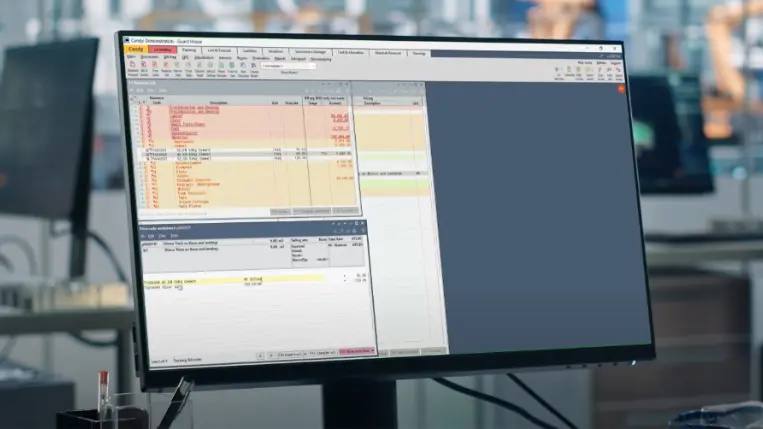
Most Recent
11 mins read
10 mins read
10 mins read
29 mins read
Blog Categories
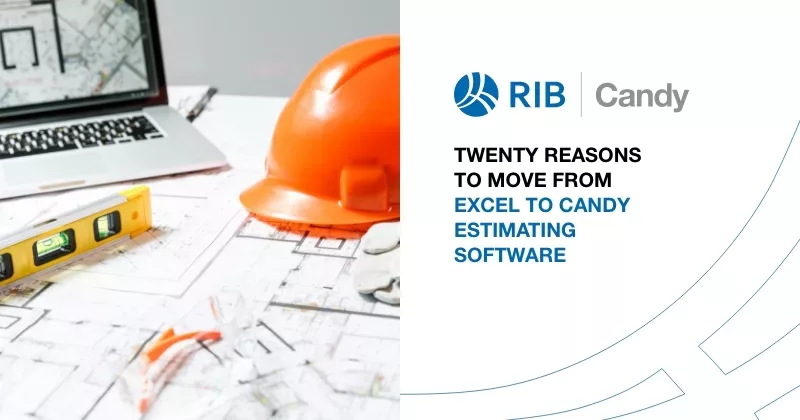
Ebook




